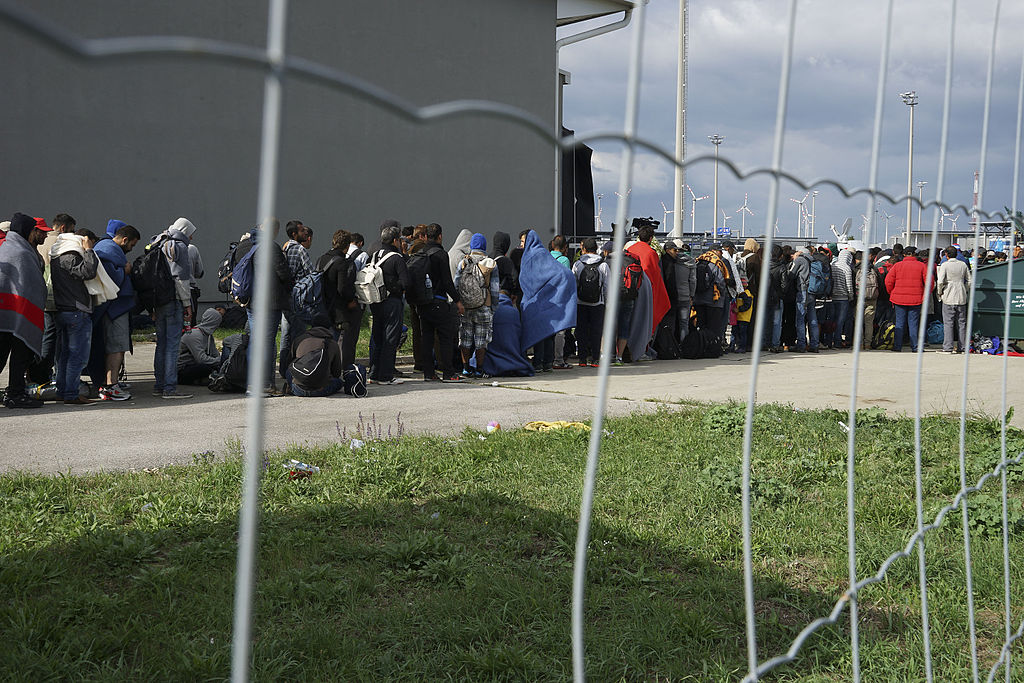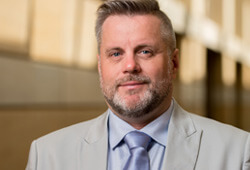
“The political and intellectual history of modernity,” writes historian Robert Orsi, “is also always a religious history.” However, as significant and diverse recent scholarship is now bringing to light, narratives around the political, intellectual, and religious history of modernity often serve not only to illuminate the past, but also to obscure it through the authorization of specific forms of experience and knowledge.
This symposium, entitled “Decolonizing Narratives, Denaturalizing Modernity,” aims to highlight recent scholarship that complicates received notions around the history of modernity. While focusing on distinct temporal, geographical, and religious contexts, in their shared attempts to uncover histories hidden by the dominant discourses of modernity, the authors featured in this symposium uniformly challenge the naturalization of modernity’s emergence and indicate that that the history of modernity has always been (and remains) fundamentally contested.
Modernity and Witchcraft
In Peter Geschiere’s now seminal work, The Modernity of Witchcraft, witchcraft discourse and the occult more generally in West Africa are presented as a flexible and ambivalent mechanism to consider and engage social change, and not a logically closed system of beliefs and practices in the manner described by earlier structural anthropologists. Witchcraft is highly important today because many individuals from different countries and communities on the African continent turn to forms of magic, vodou, juju, or the supernatural broadly understood to navigate the unsteady and inconsistent challenges of globalization. If Robert Orsi’s contention that the political history of modernity is also always religious history, it merits considering how this might extend to one of the most widespread and omnipresent religious forces and practices in Africa, namely witchcraft as a manifestation of the supernatural. Witchcraft accusations that surface in various guises in asylum claims, and how they are adjudicated and often rejected for various reasons such as not rising to the level of what is considered religion in European and North American immigration courts, provide one context to think about this issue.
In 2009, the adherents of a vodou priest (bokono) kidnapped Dopé (not her real name) in Cotonou, Benin, and brought her to the atikevodou shrine of Sakpata near Cové where she was imprisoned and raped. After several weeks, Dopé, an educated, married mother, escaped to her husband and then fled to the US to seek asylum. She believed her experiences were the result of her childhood betrothal as trokosi, a form of indebted curse exacted for her mother’s infidelity. Dopé’s supernatural narrative troubled her lawyers and they feared no judge would consider it credible. They reframed her claim by documenting misogynistic forced marriage practices, sexual assault, child abuse, child slavery and the widespread belief in levirate (widow remarriage to husband’s kin). Her lawyers chose gender violence arguments coupled with established precedent pertaining to slavery and trafficking as a strategy to avoid foregrounding the discussion of vodou, often considered a form of witchcraft by adjudicators (asylum-granting officials).
The Asylum Process and the Climate of Suspicion
Dopé’s experience, like those of other women whose testimonies I have been asked to evaluate as an expert witness in federal immigration court, is emblematic of legal strategies unfolding in response to the increasing securitization of migration described by Vicki Squire, and new technologies of adjudication my co-editor, Galya Ruffer, and I have explored elsewhere. Until the 1980s, refugee and asylum legal procedures operated within an informal climate of trust and applicants were generally presumed to be telling the truth. Customized research—such as expert testimony from scholars or professionals or medico-legal reports—was almost unheard of. Since the 1980s, however, significant global geopolitical changes have conspired to turn the refugee experience upside down. The refugee status determination process is now overshadowed by what Didier Fassin and Estelle D’Halluin refer to as a “climate of suspicion, in which the refugee or asylum seeker is seen as someone trying to take advantage of the country’s hospitality.”
What Paul Ricœur first called “hermeneutics of suspicion” characterizes asylum and refugee proceedings and gives rise to new technologies. One such technology, data referred to as “Country of Origin Information” or COI, has become central to the pseudo-scientific testing of asylum narratives, and increasingly it features in so-called “credibility assessments.” Adjudicators increasingly emphasize the importance of empirical research in establishing claimant credibility. Claims and counterclaims must be anchored by objective data, publicly sourced information, and arguments substantiated by scholarly evidence.
Country of Origin Information has emerged as a specialized knowledge category that attempts to answer, with empirical data, the central matter of refugee law: namely, who is a refugee? As Jean-François Lyotard explained, the burden resting on individual asylum seekers to prove claims that often cannot be documented is a “wrong,” but one that is “accompanied by the loss of means to prove the damage.” The temptation to stretch, embellish, or invent narratives that conform to asylum law is thus enormous. Cross-cultural and cross-linguistic communication barriers coupled with physical and psychological traumas add considerable complexity, making inconsistency part and parcel of the process of narration. Indeed, as Jacques Derrida explained, the borderline between “political” and “economic” refugees is very difficult to determine.
Asylum and the Supernatural
Recent scholarship on the supernatural in Africa—including, but not limited to practices described as magic, sorcery, and witchcraft—has returned to the distinction, first articulated by E.E. Evans-Pritchard, between external and somatic supernatural power. Peter Geschiere is one of several scholars to have observed that witchcraft, the preeminent folk terminology for the supernatural, is much more public in Africa today, and features in political and social debate. Witchcraft-driven violence challenges socio-political order with a variety of political and legislative outcomes. Witchcraft and sorcery, in Katherine Luongo’s words, “denote a continuum ranging from supernatural malevolence to supernatural healing.” Harry West has described how on Mozambique’s Muedan plateau the “world of sorcery” is “filled with shades of gray.” By contrast, however, according to Katherine Luongo, “no ambiguity about witchcraft or witches exists” in the “global arena of asylum.” Witchcraft operates as an “embodied capacity” to “harm” and it certainly does not engage the Refugee Convention’s religious protection. Luongo contends that in asylum claims, witchcraft has “an uncomfortable ahistoricity and an awkward detachment from institutions.”
Asylum-seekers are often uncomfortable divulging the full details of the supernatural realm, but generally speaking it is my experience that many are confident that their experiences mark them as constitutive of another Refugee Convention protected category, namely the “particular social group.” Asylum claims in which the supernatural is only one facet in a multidimensional case enable us to avoid entering into the rich but frustrating debate about what constitutes a distinct “social group” basis for asylum. Dopé’s story demonstrates how, in contrast with many adjudicators’ perceptions that “primitive beliefs” are the realm of the poor and illiterate, the supernatural is not confined to lower socio-economic echelons. Dopé, an educated, married mother living in Benin’s economic capital, Cotonou, but originally from the village of Cové, fled to the US after her traumatic experience. Dopé claimed she was kidnapped as an adult in her late twenties by adherents of a bokono and brought to his atikevodou (healing vodou) shrine of Sakpata, where she was imprisoned and repeatedly raped.
As indicated above, Dopé believed her experiences as an adult were the result of her betrothal as a child to a vodou shrine as a form of indebted inherited slavery (trokosi), a form of punishment exacted on her mother for her alleged infidelity. Dopé interpreted her predicament to be the result of her public disavowal of the trokosi obligations when she reached maturity. She had been raped and abused by her kidnapper’s brother multiple times as a child. But when she reached maturity, she simply walked from the compound and moved to Cotonou to begin a new life. Whereas the individual to whom she was betrothed had made no attempt to entice her to the shrine, after his death, his brother dispatched men to kidnap her, consistent with his understanding of levirate.
In Dope’s initial interview, the US asylum officer rejected the idea that educated, literate women practiced vodou. The Bureau of Immigration and Citizenship Services held that only the poor, rural, and illiterate would be involved in sorcery and magic. On appeal in immigration court, this decision was overturned. Whereas ritual enslavement and vodou confounded the first-level bureaucratic adjudicator, defensively resisting slavery, kidnapping, rape, and imprisonment—in a country where vodou is publicly sanctioned and where the state has designated a “National Voodoo Day”—constituted established grounds for social group persecution in the eyes of the immigration judge. Citing the constitution and the statutes of Benin that prohibit many practices attendant to slavery, but importantly make no mention of trokosi and vodounsi, sexual slavery, forced marriage (mariage forcé), and sexual assault in the context of marriage, the judge held that it remained the case that many women continue to be subject to the ‘Coutumier du Dahomey’ which treat them as legal minors and accord them limited rights in marriage and inheritance. Importantly, there was no evidence of enforcement of laws protecting women from some of these human rights violations. Dopé’s legal team thus successfully reassembled her narrative as that of a woman fleeing multiple backward, traditional misogynistic practices, at the center of which was a very violent form of forced marriage for which there was no plausible expectation of state protection.
Questioning Dominant Interpretations of Religion
It’s hard to understand why vodou remains so alien a concept to refugee adjudicators, particularly as the religious observance is so well documented by ethnographers and anthropologists. There is no shortage of lay and scholarly literature about the intrinsic importance of vodou and various other manifestations of animist belief and religious practice. And yet adjudicators remain resistant to interpreting persecution within the context of a vodou-based narrative as engaging the religious persecution protections enshrined in the Refugee Conventions; indeed, Orsi’s framework with which I began this blog post seem almost prophetic.
There are perhaps two reasons why vodou troubles refugee adjudicators. The first is the nature of the judiciary; for example in 2017 the UK judiciary remained composed of a majority of white males, although this is changing. Similar gender and racial dynamics can be found in many jurisdictions in Europe and North America. The second issue is the inherently conservative nature of refugee decision-making. No judge likes to be overturned on appeal. If a decision can be made based on existing and firmly established interpretation of the Refugee Conventions, there is a strong bias to avoid entering into discussion of matters that may raise the ire or the eyebrows of more senior judges or tribunal heads. Fortunately, both of these dynamics are subject to change over time, and I suspect in the near future attorneys representing other cases mirroring that of Dopé may not need to go to such lengths to achieve migrant justice.

